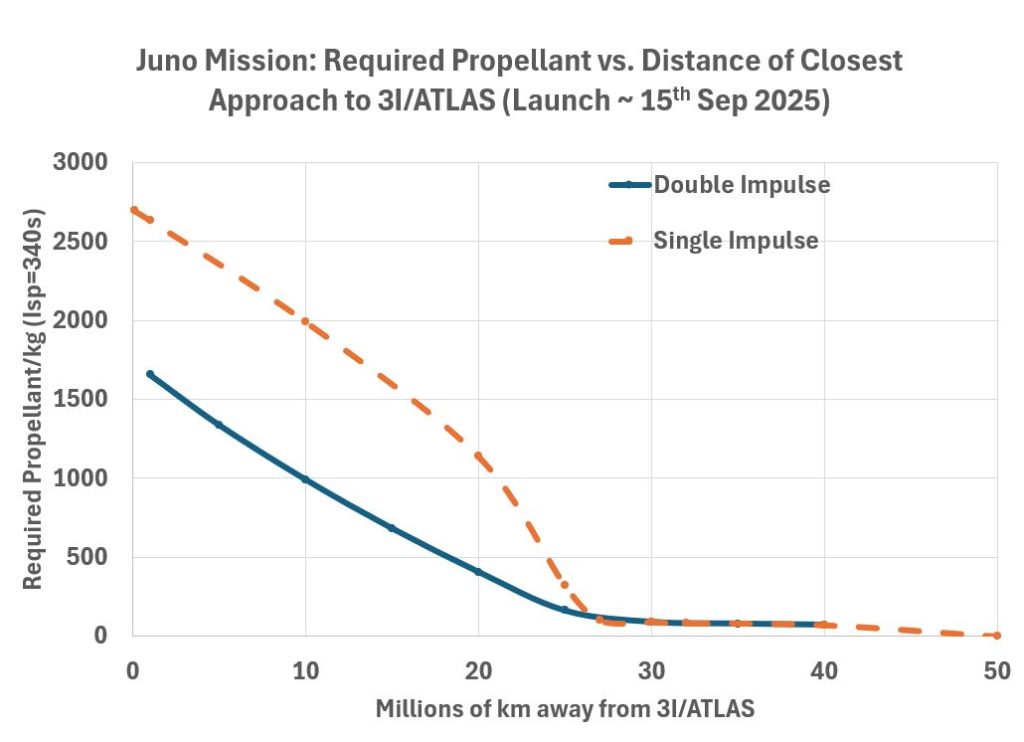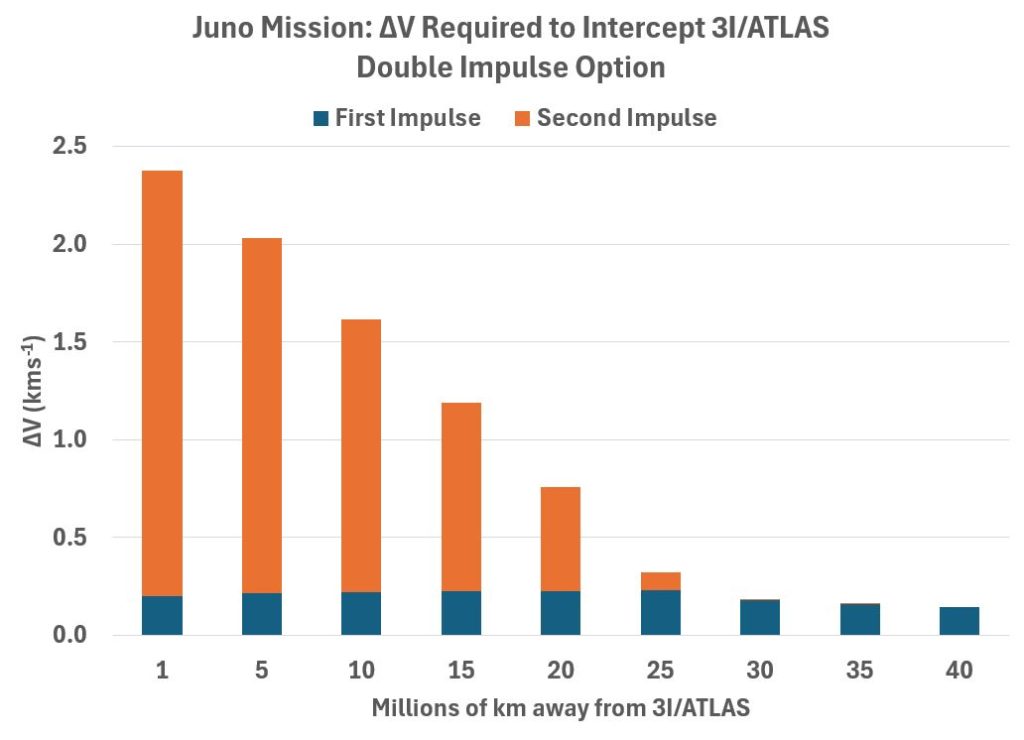Adam Hibberd
Having demonstrated yesterday that a reasonably low DeltaV (velocity increment) applied by the Juno's engine could achieve a significantly closer approach to 3I/ATLAS than would otherwise be the case if Juno stayed in its current Jupiter orbit, surely that would be the end of the matter?
The answer is 'not quite', since this was a 'single impulse' scenario and assumed only a one-off application of DeltaV to heave the probe closer to the target. This clearly neglected the possibility of multiple impulses, which could well demand a much smaller overall DeltaV budget though still achieve the same desired goal.
As already explained in my previous blog here, further impulses add significantly to the overall complexity of the problem, and so slows the convergence time of the Non-Linear Problem (NLP) solver, in this case NOMAD. However I determined to investgate the double impulse option using a modified version of the REBOUND software I developed for the single impulse case, and the results were forthcoming after a couple or so days of execution.
See below for the pertinent plots extracted from the revised paper (which is here btw).


We see from the first plot that for 3I/ATLAS distances of less than say 25 million km, there is a significant saving in required propellant as compared with the single impulse case, with typically 50% less propellant being required.
This incredible finding is offset to some extent by the fact that for distances greater than 25 million km, where very little propellant is needed, the saving from the additional impulse becomes negligble and with reducing DeltaV requirement, the double impulse merges into the single impulse solution, as we see from the second plot above.